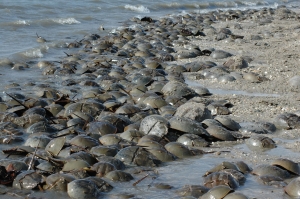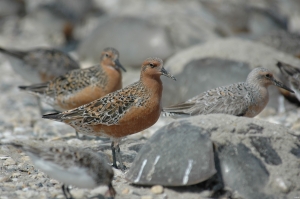If you’ve kept on eye on the sandy shores of the Atlantic Ocean or eastern Gulf of Mexico over the past twenty years you’ve noticed a significant decline in the number of horseshoe crabs, Limulus polyphemus, covering the beach. As a marine educator and naturalist in my past life, I always said the decline was due to over harvesting for bait and pharmaceutical needs. This is only half the reason. Recently scientists also noted that climate change, with the sea level rise and temperature fluctuation, may be a cause of the decline.
Tim King, a scientist with the United States Geological Survey, thinks that what happened during the Ice Age could happen again. With climate change comes a loss of habitat and a loss of diversity. These issues could have severe implications, not only for horseshoe crabs, but also for species that rely on them for sustenance. For instance, along the Delaware Bay the red knot eats the horseshoe crabs eggs at the midpoint of their migration. In the Chesapeake Bay, loggerhead sea turtles are struggling to find one of their favorite food sources, horseshoe crabs, and are retreating elsewhere to find food. Now that the link of a decline in the horseshoe crab population and climate change has been made fisheries managers can take this into consideration.
Images (c) Greg Breese, US Fish and Wildlife Service









What people are saying …